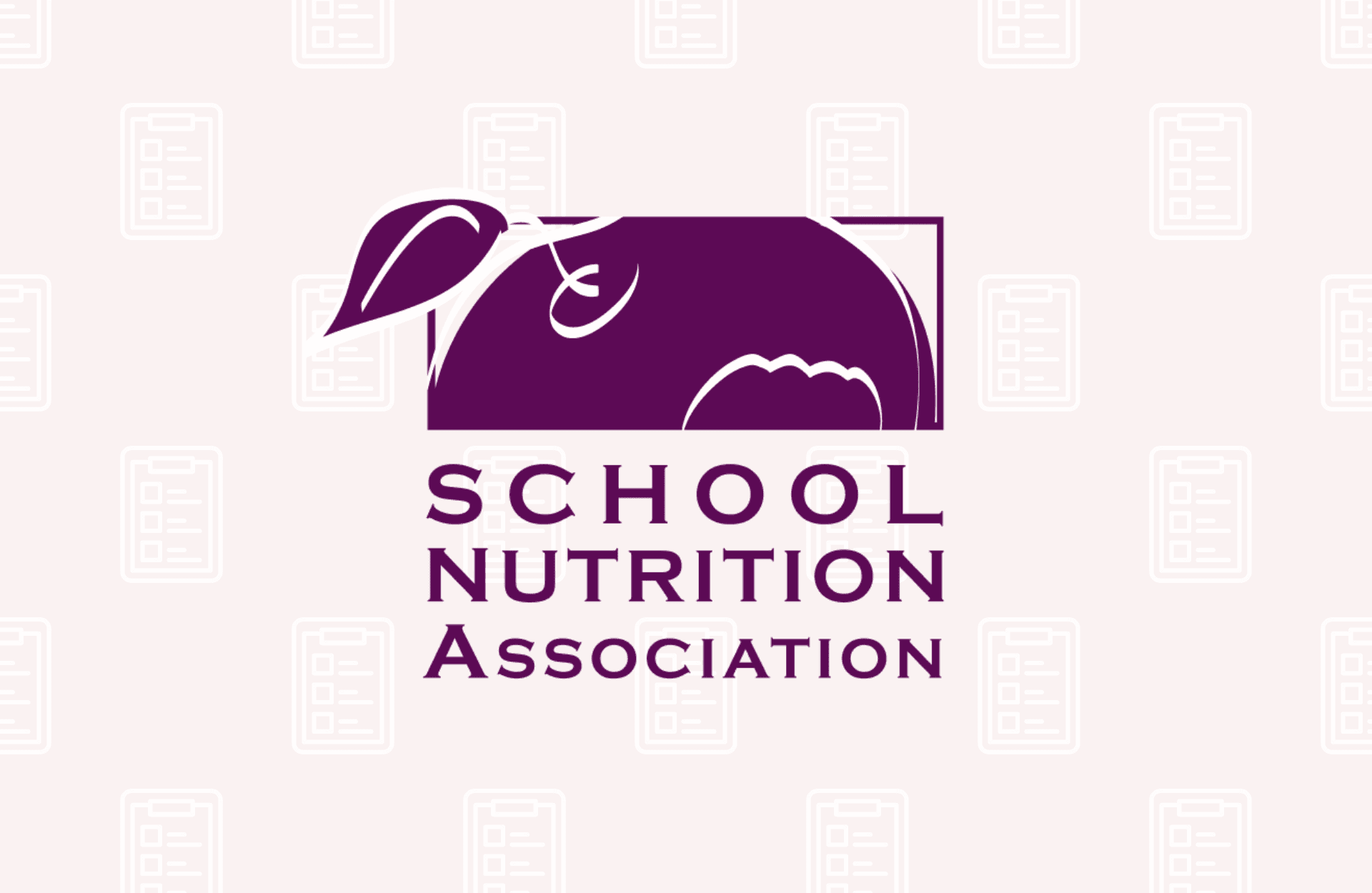FOR IMMEDIATE RELEASE:
Contact: Diane Pratt-Heavner
703-576-7526
media@schoolnutrition.org
ARLINGTON, Va. – As back-to-school season approaches, a new report chronicles the continued supply chain and labor crisis impacting school meal programs nationwide and the strategies school nutrition professionals employ to ensure students continue to receive healthy meals. “Staying Afloat in a Perfect Storm” details insights from a series of listening sessions with 274 school meal program operators, K-12 industry representatives and State Agency officials. The sessions were hosted in May 2022 by the School Nutrition Association (SNA) and School Nutrition Foundation (SNF) with support from Share Our Strength’s No Kid Hungry campaign.
SNA’s November 2021 Supply Chain Survey found virtually all school meal programs struggled with product shortages (98%), rising costs (97%) and labor shortages (95%). This new report confirms these issues persist as schools continue to struggle to obtain the foods, beverages, supplies and equipment they require in a timely manner, in sufficient quantities and at a contracted and budgeted price.
[School nutrition] directors report spending hours on the phone each week with manufacturers and distributors to determine product availability and alternatives, continually scrambling to change planned menus.
Industry representatives report problems in every link of the supply chain with shortages and cost increases for raw materials, packaging, equipment and fuel, as well as labor shortages across manufacturing and transportation sectors.
One distributor shared that they need 400 new trucks – and may only get 10 by the end of 2022! Even the increased price of lumber has an impact on the pallets needed to transport cases of product.
These issues have forced manufacturers and distributors to reduce the number of products they offer, making it even more difficult for schools to meet highly-specialized school nutrition standards. Vendors have had to limit the frequency of delivery drops to school districts, require minimum purchases, add surcharges or increase prices and require longer “lead” or order times.
One director spoke of a 280% increase in the cost of gloves. One major city director in the Midwest recently revealed an 80% to 137% increase in bread prices for SY2022-23.
“I was advised to order my Thanksgiving turkeys now, in May, or I will not be able to get them for November.”
School meal programs also face labor shortages and have raised wages, further straining tight budgets. Short-staffed school nutrition teams have had to pull back on labor-intensive meals, such as scratch-prepped menu items, and anticipate a struggle to manage the collection and processing of free and reduced-price meal applications this fall, when school meals are no longer free for all students.
Solutions:
School nutrition professionals have responded to each new challenge with determination and out-of-the-box thinking. The report spotlights numerous strategies utilized to manage supply chain and labor challenges.
Menu solutions include:
- Streamline menus to reduce inventory and order more versatile products that can be used in different recipes/menu options
- Increase purchases from local producers and swap canned/cupped fruit with more readily available fresh, whole fruit options
- Maintain a supply of shelf-stable milk and freeze menu items to serve in case of delayed/cancelled deliveries
- Cut pizza boxes and clamshell containers in half to use when lunch trays are unavailable
Labor solutions include:
- Utilize staffing agencies, provide referral bonuses to recruit new staff
- Partner with career and technical education departments, allowing students to help in kitchens
- Work with local restaurants to prepare select menu items
Storage solutions include:
- Partner with neighboring districts to share the cost of leasing a central warehouse, allowing schools to stock up on available menu options/supplies and share truckloads of product
- Purchase refrigerated trailers to expand storage capacity and accommodate less-frequent, larger deliveries
Procurement solutions include:
- Increase communication with brokers about product availability and substitute menu options
- Provide flexibility for nighttime and weekend deliveries
“The supply chain crisis, labor shortages and high costs are a long-term reality for school meal programs,” said SNA President Lori Adkins, MS, SNS, CHE. “Despite these obstacles, school nutrition professionals have demonstrated a remarkable capacity to pivot and innovate to ensure students continue to receive healthy school meals. Congress and USDA must continue to ensure the sustainability of these programs, which provide a critical nutrition and hunger safety net for America’s students.”
“School meal programs play an essential role in ensuring kids get more of the nutrition they need to thrive in and out of the classroom. This year, as school nutrition departments continue to grapple with supply chain issues and inflation, it’s increasingly important that we find solutions that support and strengthen these programs,” said Lisa Davis, Senior Vice President of Share Our Strength.
About School Nutrition Association:
The School Nutrition Association (SNA) is a national, non-profit professional organization representing 50,000 school nutrition professionals across the country. Founded in 1946, SNA and its members are dedicated to making healthy school meals and nutrition education available to all students. For more information on school meals, visit www.schoolnutrition.org/schoolmeals
About School Nutrition Foundation:
The School Nutrition Foundation (SNF) is an independent 501(c) (3) and the charitable arm of the non-profit School Nutrition Association (SNA). Since1964, SNF has supported school nutrition professionals nationwide through scholarships, research and professional development programs.
About No Kid Hungry:
No child should go hungry in America. But in the wake of the coronavirus pandemic, 1 in 6 kids could face hunger this year. No Kid Hungry is working to end childhood hunger by helping launch and improve programs that give all kids the healthy food they need to thrive. This is a problem we know how to solve. No Kid Hungry is a campaign of Share Our Strength, an organization committed to ending hunger and poverty.
Related Articles

SNA Urges MAHA Commission to Invest in School Meals
Read More

School Nutrition Professionals to Implore Congress to Protect School Meals
Read More




